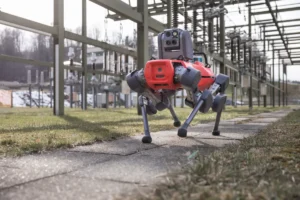The autonomous vehicles are designed to drive themselves safely from a starting point to a destination in some or even all situations.
Semi-autonomous systems can operate with little human interaction and minimum intervention, equipped with advanced driver assist technologies.
Various standards have been made to measure the AV (Autonomous Vehicle) automation level, as described by SAE (Society of Automotive Engineers). There are 5 levels of AVs functionality, ranging from 0 (fully manual) to 5 (fully autonomous) which means that the ADS (Automated Driving System) has the ability to monitor the driving tasks and environment, fully replaces the human driver. It then take control under all conditions.
The behavior of the AVs could be influenced by the adverse weather and environmental conditions of the surrounding area. Rain and snow cause a significant degradation of the camera, Light Detection And Ranging (LiDAR), which could send the incorrect message and can lead to wrong decisions. AVs must be able to monitor and recognize the surrounding environment using the sensors such as LiDAR, camera, Millimeter-Wave Radar (MWR), Global Navigation Satellite System (GNSS), Inertial Measurement Unit (IMU) and drive autonomously while operating in industrial or urban areas.
In industrial and transportation sectors such as plants, mines and ports semi-automated and fully autonomous vehicles are widely used. Several infrastructures are already fully automated while others are prepared for automation that can improve the handling of goods and the transport of people.
Material and goods handling performance is an essential activity for the competitiveness of many port infrastructures. In the Yangshan port in Shanghai, China, operations are fully automated, container cranes are remotely controlled, trucks used for transporting containers, loading and unloading tasks are replaced by Automated Guided Vehicles (AGVs).
An AGV is a completely autonomous vehicle, pre-programmed to move goods around an infrastructure or operate within a confined space, in companies or areas where other systems and human operators work.
AGVs are battery-powered, self-driven vehicles, can perform a wide variety of tasks in several industries, are used during indoor and controlled outdoor logistics tasks. They provide flexibility and efficiency. AGVs that carry out the transportation tasks are controlled by a central computer or server via wireless communication.
AGVs increase productivity and efficient, reduce operating costs and improve safe and inexpensive transport of products.
Jessica Moro
DSO
Image
Cover: Automated guided, electric vehicles […], LBTC Port of Long Beach by DENNIS SCHROEDER / NREL, National Renewable Energy Lab.

